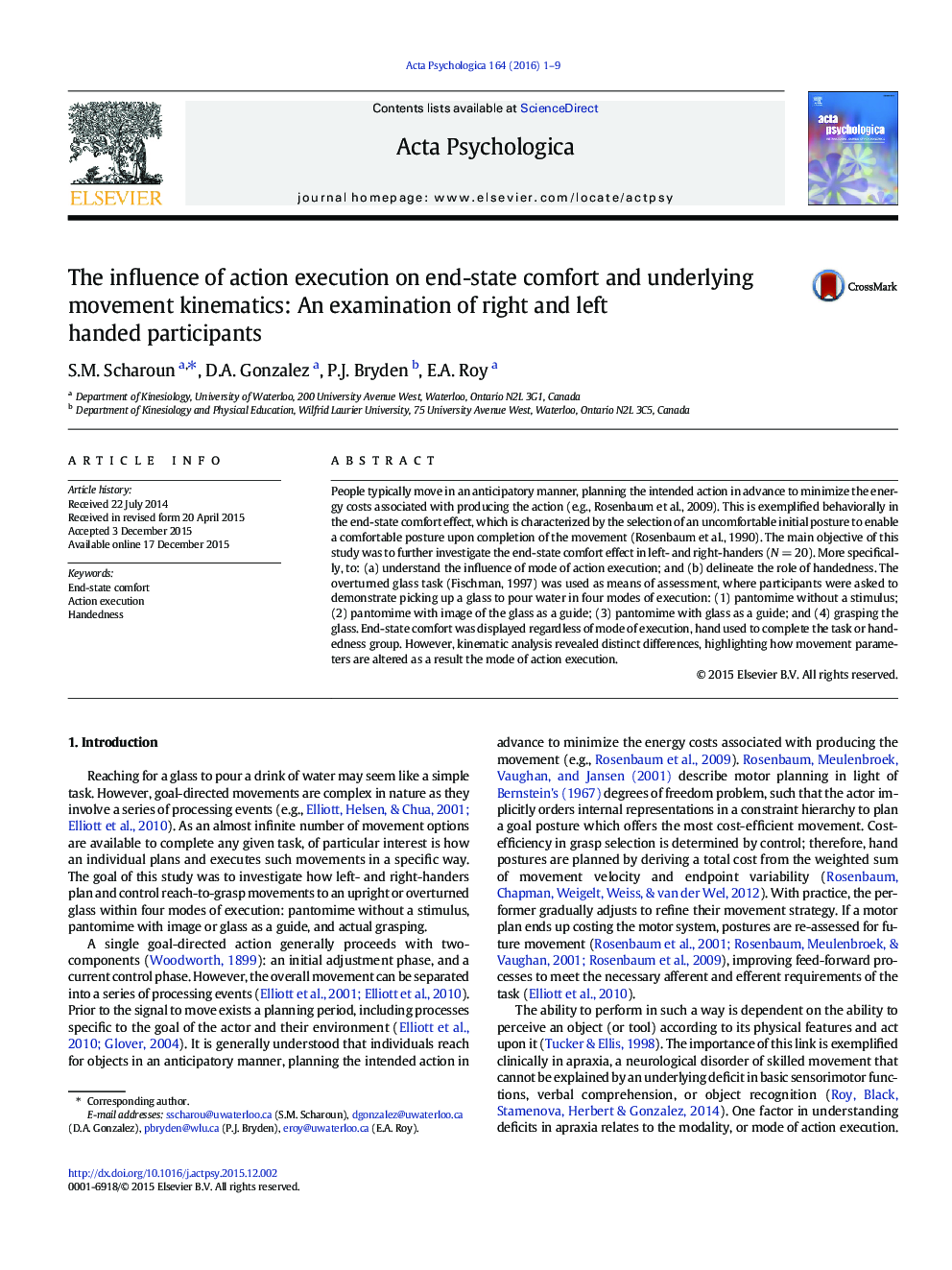| Article ID | Journal | Published Year | Pages | File Type |
|---|---|---|---|---|
| 919650 | Acta Psychologica | 2016 | 9 Pages |
•End-state comfort was displayed regardless of mode of action execution.•End-state comfort was seen in both hands by both handedness groups.•Kinematic analysis revealed distinct performance differences.•Results provide support for distinction between pantomime and actual use.
People typically move in an anticipatory manner, planning the intended action in advance to minimize the energy costs associated with producing the action (e.g., Rosenbaum et al., 2009). This is exemplified behaviorally in the end-state comfort effect, which is characterized by the selection of an uncomfortable initial posture to enable a comfortable posture upon completion of the movement (Rosenbaum et al., 1990). The main objective of this study was to further investigate the end-state comfort effect in left- and right-handers (N = 20). More specifically, to: (a) understand the influence of mode of action execution; and (b) delineate the role of handedness. The overturned glass task (Fischman, 1997) was used as means of assessment, where participants were asked to demonstrate picking up a glass to pour water in four modes of execution: (1) pantomime without a stimulus; (2) pantomime with image of the glass as a guide; (3) pantomime with glass as a guide; and (4) grasping the glass. End-state comfort was displayed regardless of mode of execution, hand used to complete the task or handedness group. However, kinematic analysis revealed distinct differences, highlighting how movement parameters are altered as a result the mode of action execution.
